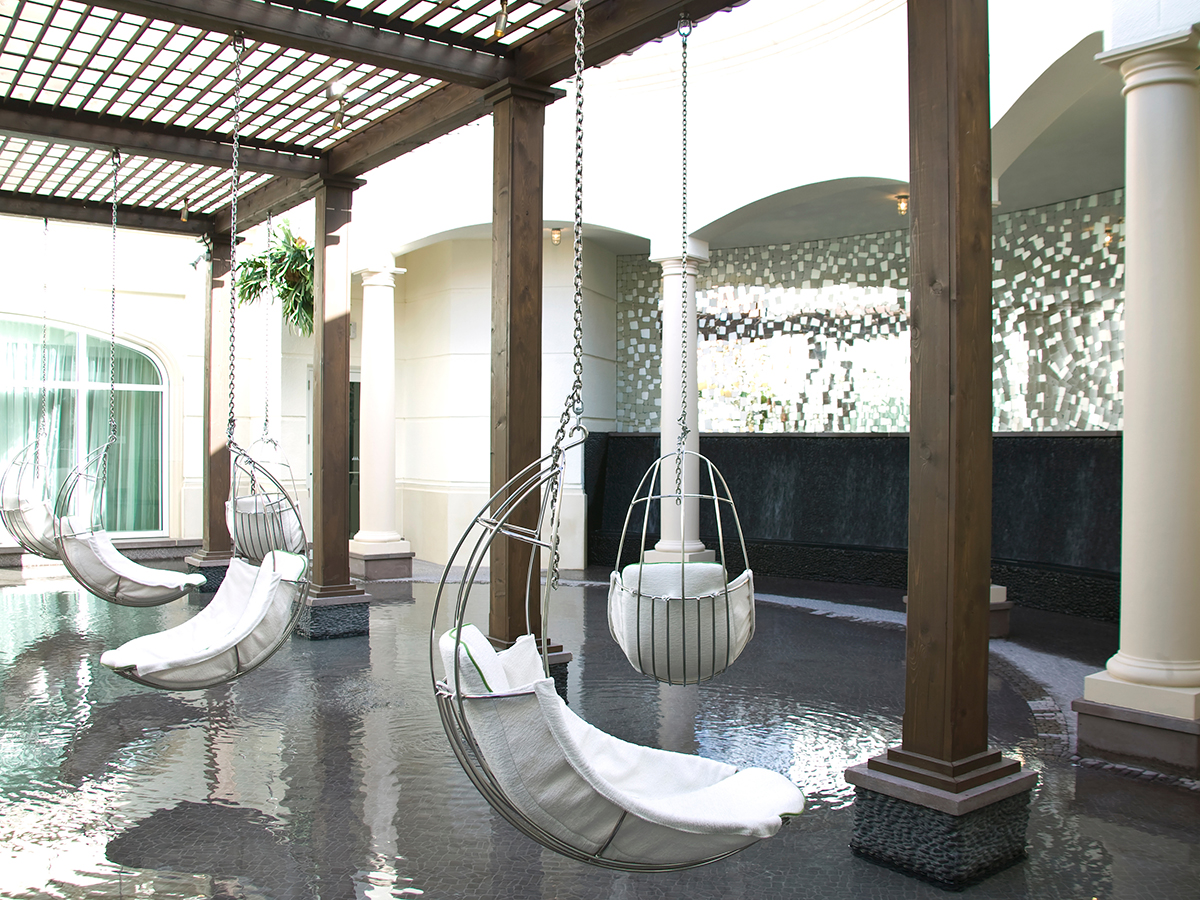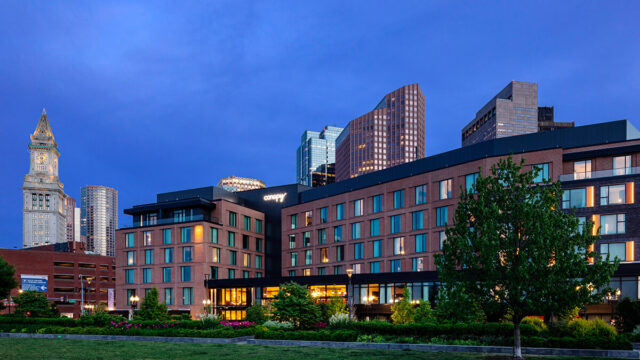COVID-19 has undoubtedly affected society’s physical health and the landscape of medicine going forward. As devastating as the pandemic has been and still is from a physical perspective, it’s also changed the way we value mental health.
Quarantines, mask mandates and travel restrictions have all reshaped our ‘normal’ lives, not to mention the economic turmoil that the pandemic has left in its wake. Although the pandemic has changed and certainly taken lives, perhaps a silver lining could be that it has placed an increased emphasis on mental health, and hotel leaders are taking notice, especially when it comes to design.
“Now more than ever, I think we’re seeing the importance of mental health as it affects not only our lives, but the productivity of our people and organizations,” said Mike Larson, senior associate/project director/studio leader for the Las Vegas studio, JCJ Architecture. “We’ve spent the last 18-plus months rightfully concerned about the physical health of our colleagues, but that consciousness is now expanding beyond just physical well-being. We need to keep our organizations physically healthy to be productive; mental health is no different.”
Design truly does have the power to reinforce hospitality’s commitment to mental health, fostering spaces that not only provide safety, but an emotional connection.
“Due to the global pandemic, designing for the public’s health, safety and welfare should also begin to address our heightened awareness of people’s needs for both emotional and social accessibility regardless of the building type,” said Cheryl Smith, regional practice leader, NELSON Worldwide. “Without getting political, our designs should be helping to find ways to heal the general population.”
Alex Campbell, director, Hospitality Studio, NELSON Worldwide, explained that the firm tries to place itself in the minds and footsteps of the guests and consider the experiences they have in the spaces.
“In a sense, good hotel design is all about the mental well-being of the hotel guests,” Campbell said. “A hotel is a place of rest and relaxation whether for someone who is traveling for business and needs a space to rest after a long day, or to prepare for the big meeting ahead or for the family on vacation looking for a place to create memories.”
NELSON Worldwide incorporates items like scent machines in public spaces to help create pleasant aromas to heighten the guest experience.
“We strive to consider the employee spaces as well to create environments that help for smooth operation of the hotel and lessen the stress and burden on employees who take care of the guests,” Campbell said. “From considering the finishes in employee spaces, considering distances an employee might have to walk between break areas, employee restrooms and their work area, we attempt to minimize these impacts on employees and help reduce operational costs as well.”
Campbell explained that most of their hospitality clients don’t really need a formal education on mental well-being, as most developers they work with are experienced enough to understand the concepts of guest well-being and are already focused on delivering a great experience for their customers.
“Working with owners and operators across the hospitality industry, it is our mission to create spaces that embody the definition of hospitality—the friendly and generous reception and entertainment of guests, visitors or strangers,” said Danae Tinsley, associate/project manager, JCJ Architecture. “From a guest perspective, providing amenities in the guestroom which allow them to log-in to their streaming accounts, have charging capabilities at their bedside and space to work and relax ensures that their experience is familiar, therefore reducing stress.”
Tinsley added that enhanced building management systems are being implemented more regularly and provide individual control for everything from temperature, lighting, window treatments and a personalized welcome message displayed on the room television.
“The color palette used is also important. Colors like red and yellow may cause anxiety, while blues and greens are more calming. Additionally, providing natural light benefits guests and employees alike,” Tinsley added. Color can also be used as a substitute for inadequate natural light. “We can adjust the color temperature of the lighting in the room and select artwork and materials to soften the interior space.”
Campbell noted that there has been a trend toward outdoor spaces, providing a more natural connection for both employees and guests, to which other leaders agreed.
“Of course challenges are always there, and often center around common topics like space, time and money,” Larson said. “‘The way things have always been done’ is often the most economical, but moving away from that response into a more creative mindset unleashes many opportunities, and our clients and builder partners are becoming more and more open to this. Being consciously aware of the goals of designing spaces with well-being in mind, you come across tremendous opportunities along every step of a guest’s journey: utilitarian, transitional and outdoor spaces are just a few places where opportunity abounds as many guests don’t expect to see something like plant material while traveling from the parking garage or a comfortable chair with a great view and power at the ready. This makes a five-minute stop between a meeting and dinner an unexpected breath of fresh air. There’s no end to the opportunities.”
Mental and physical health are also inextricably linked, Larson noted, and data from healthcare professionals is increasingly telling the story that one is vital to the other.
“From a design standpoint, addressing both mental and physical health can happen many ways—sometimes the solution for one is the solution for the other,” Larson said. “Think having natural light or a bit of outdoor space, as this does both the mind and the body good. We also consider when our design elements play a role in the guest experience to ensure they are taken care of when they need to be taken care of, for example, design elements for peace and tranquility are important at the beginning and end of the day in the guestroom, as are the supporting program elements such as the morning meal or exercise. Contrast that with the emotions of passion and excitement that may be important in the evening—these are different experiences, but both have to address the physical and emotional well-being of the guest.”
There are plenty of opportunities when it comes to designing for all facets of human health. According to Sarah Fox, associate principal, CallisonRTKL, one to note is encouraging people to experience the joy of connecting with nature as the others leaders discussed, but also, the local community.
“Being able to reach out; it’s that notion of the conscious destination and this idea that we’re all part of this world,” Fox said. “I think we’re starting to understand the importance of the whole ecosystem of our people and our planet. The saying, ‘You should be designing for seven generations in the future,’ is so true. It’s the idea of giving back to the world as a designer. At the end of the day, that’s what you want to leave the world with, something that you’re proud of. To me, that’s the opportunity to make a difference and to educate.”
Connecting with other people and communities certainly satisfies natural human needs, but it also honors the core of the hospitality industry. One simple way to encourage designing for mental health is inciting it internally.
“One trend we have seen across the industry is ownership calling staff ‘team members’ vs. ’employees.’ This simple change in vocabulary changes the mindset of these team members and encourages the staff to take pride in the part they play in the guest experience,” Tinsley said.
Leading a studio of about 15 people, Fox noted that one of the most important things she encourages is a healthy work-life balance.
“I’m a mother; I have two young boys, they’re seven and nine now, but when I came back to work after maternity leave, it was this matter of “OK, I don’t want to give up on my career, I love what I do, but I’m also a mother and I need to be present for my kids,’” Fox said. “As a leader, I encourage it, promote it in everyone I work with, and reap the rewards from it. I have people who have been here for over a decade that say, ‘I just never want to leave your team.’ That to me is a return on investment. You’re investing in and you understand the importance of their free time and lifestyle choices. I also encourage team members to take a mental health day. Leading in a way that promotes mental well-being, kindness and acceptance generates a positive work culture and leads to less burnout. I also strive to make a point to make personal connections with my team, such as asking how they are doing or listening to their weekend plans. These conversations matter in the workplace and create respect between colleagues.”




